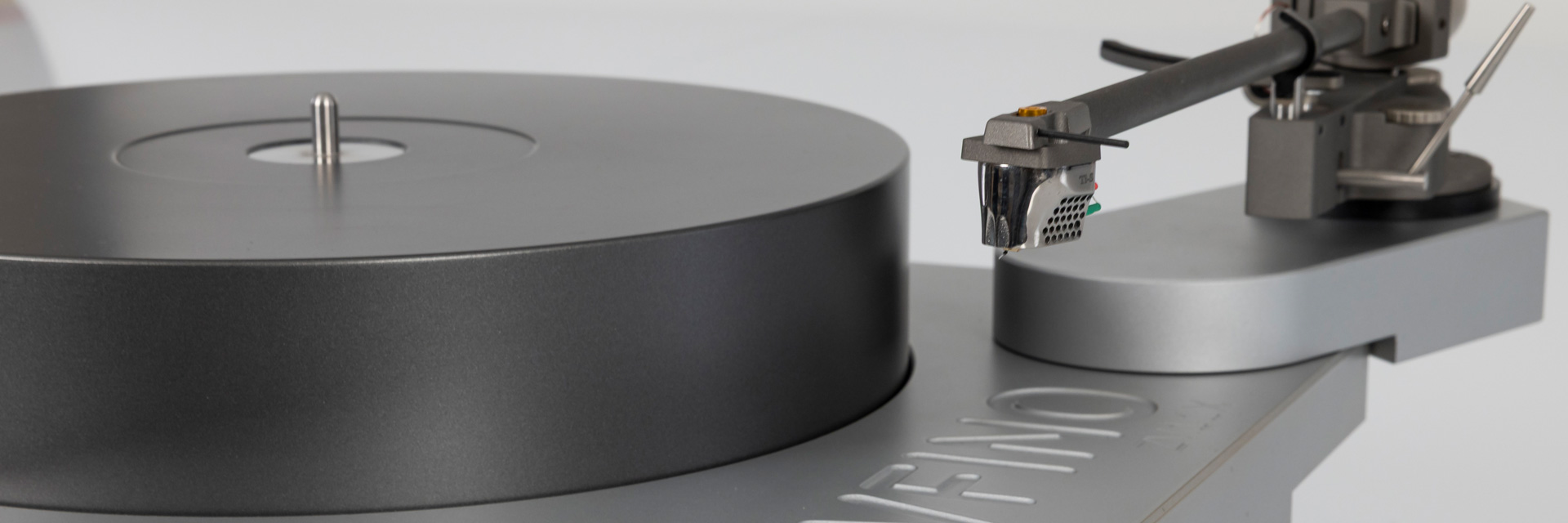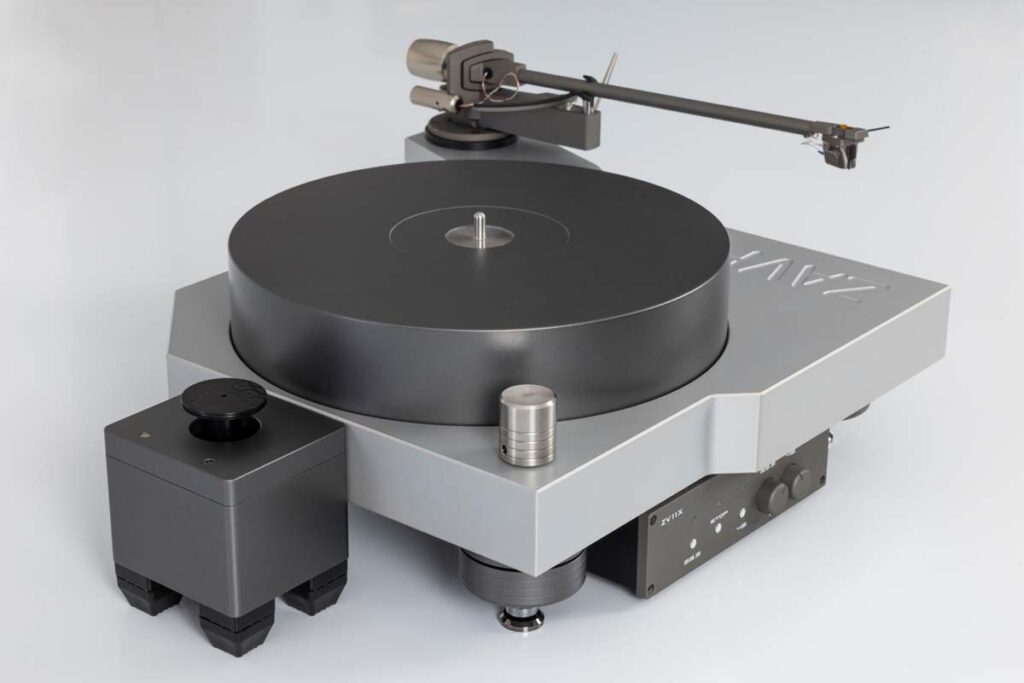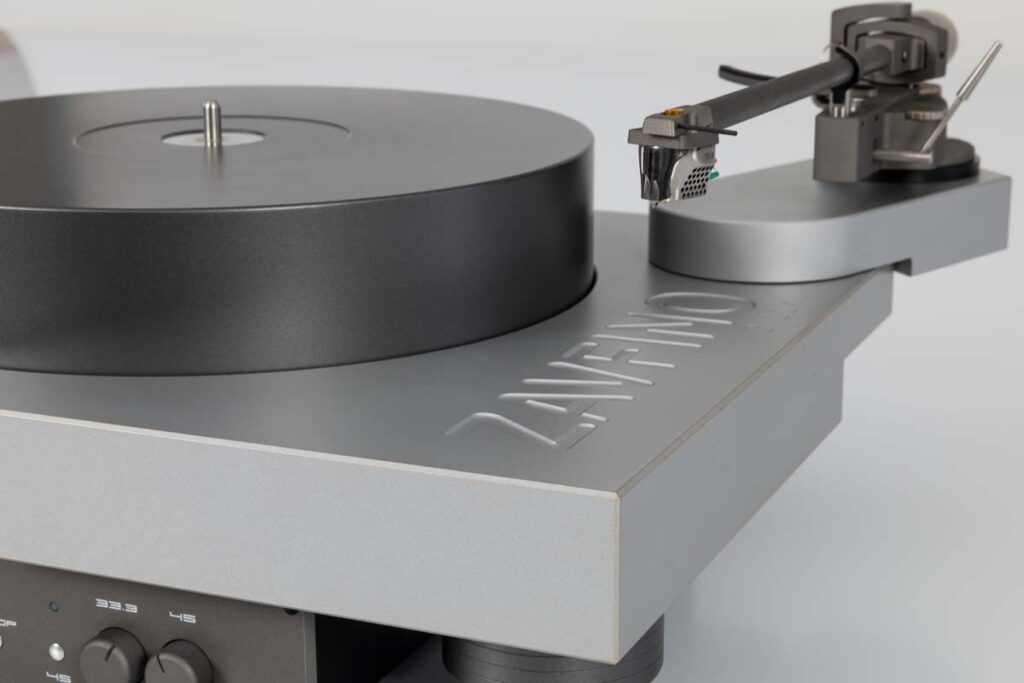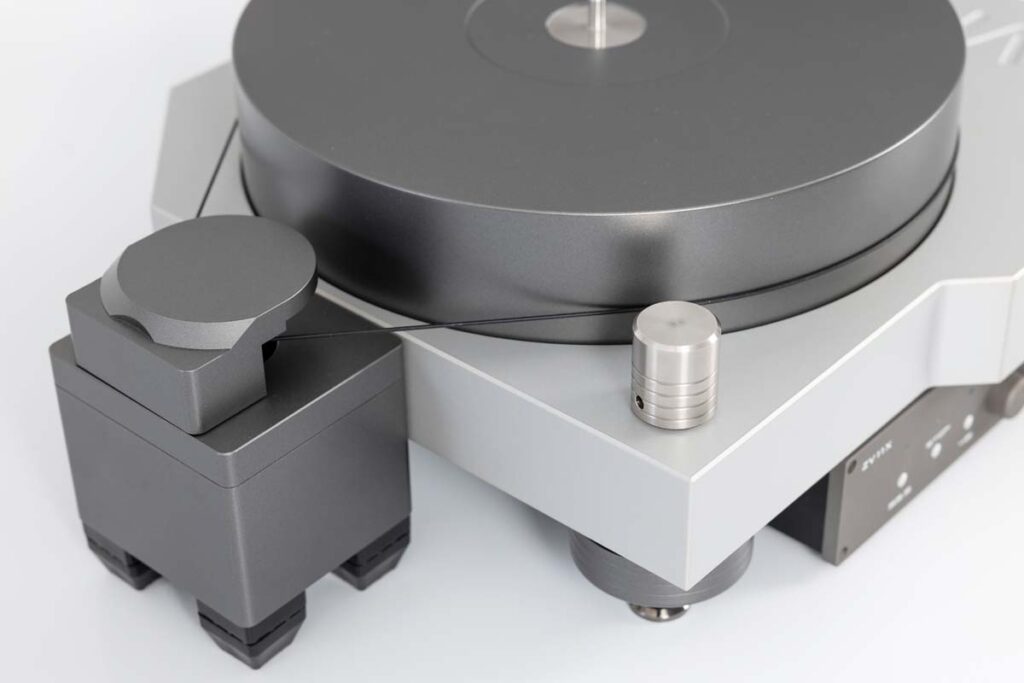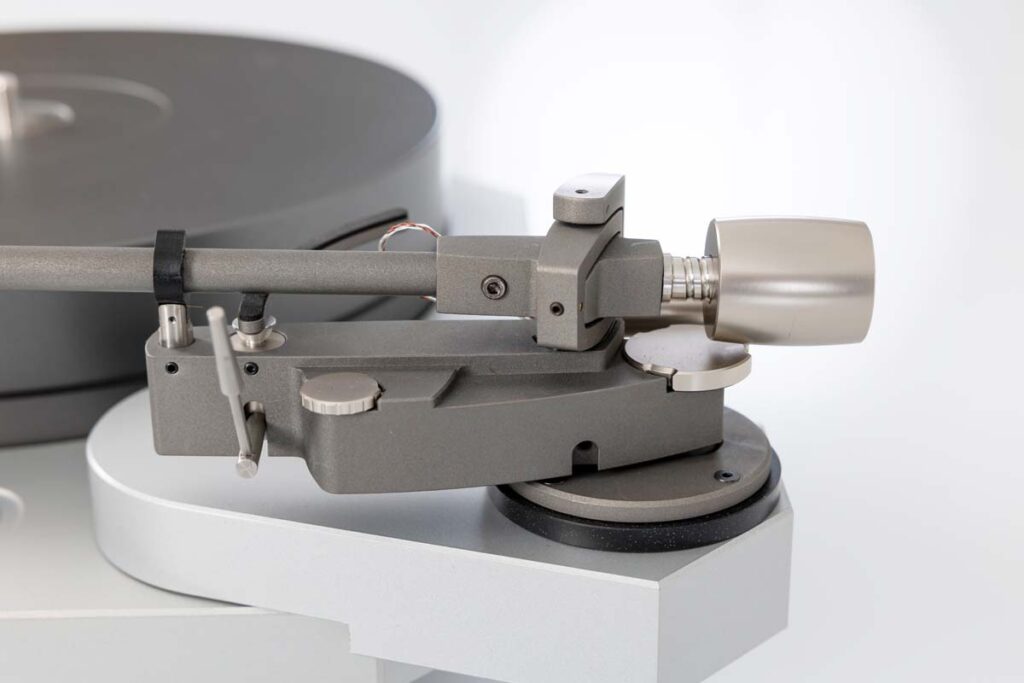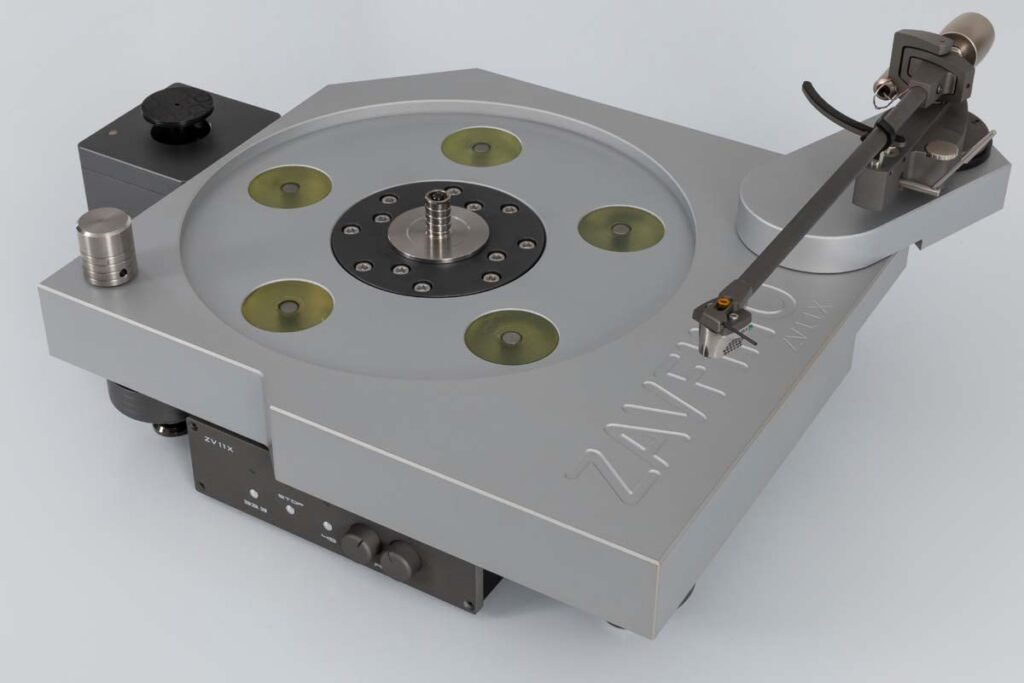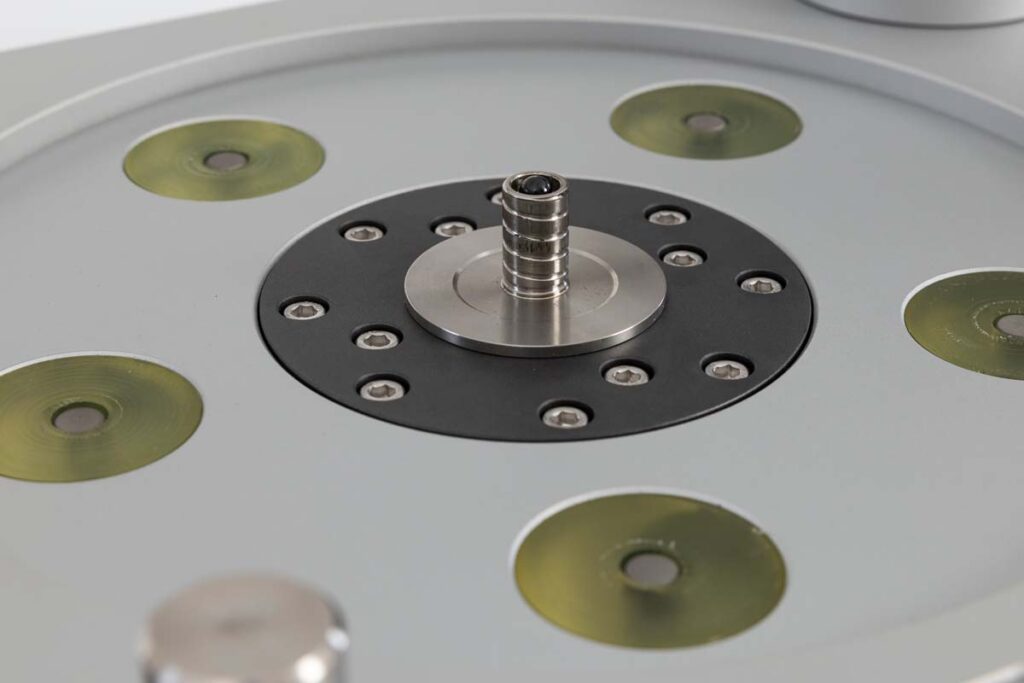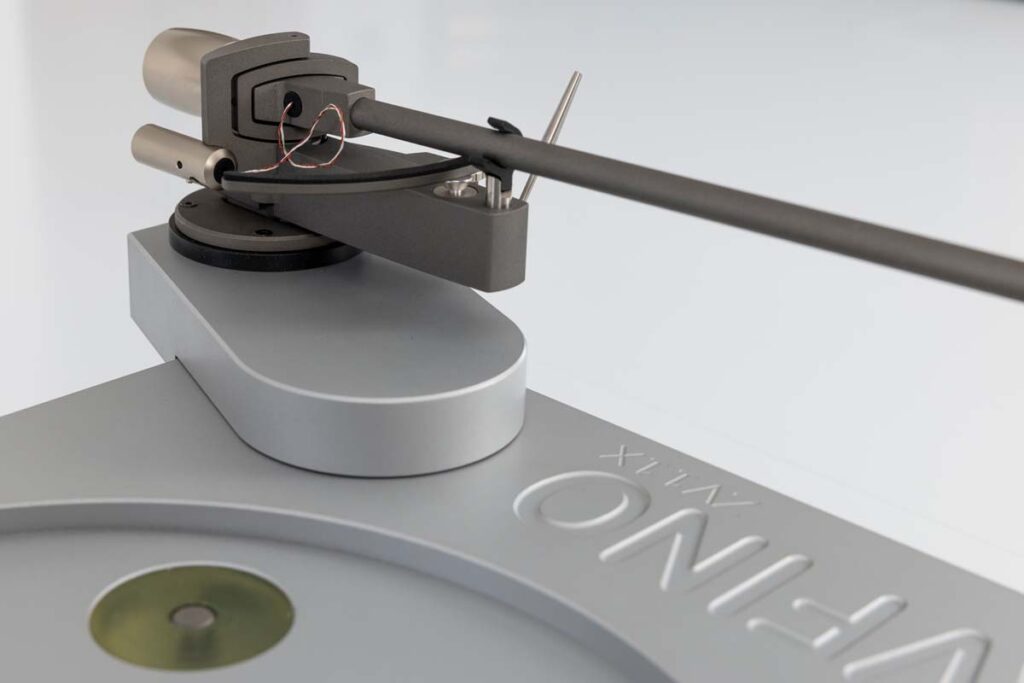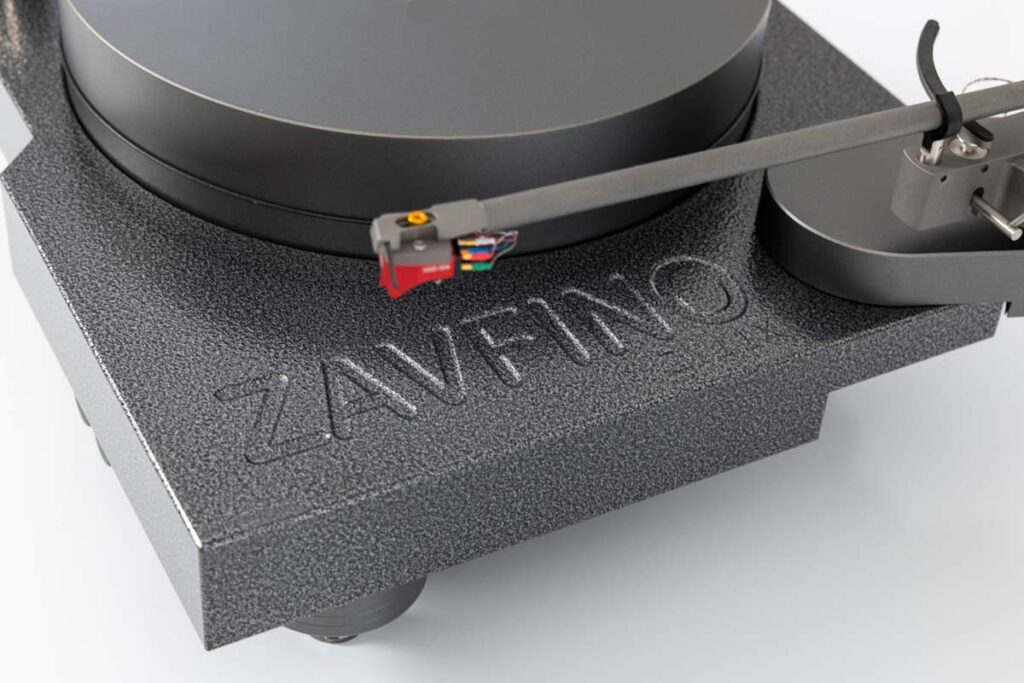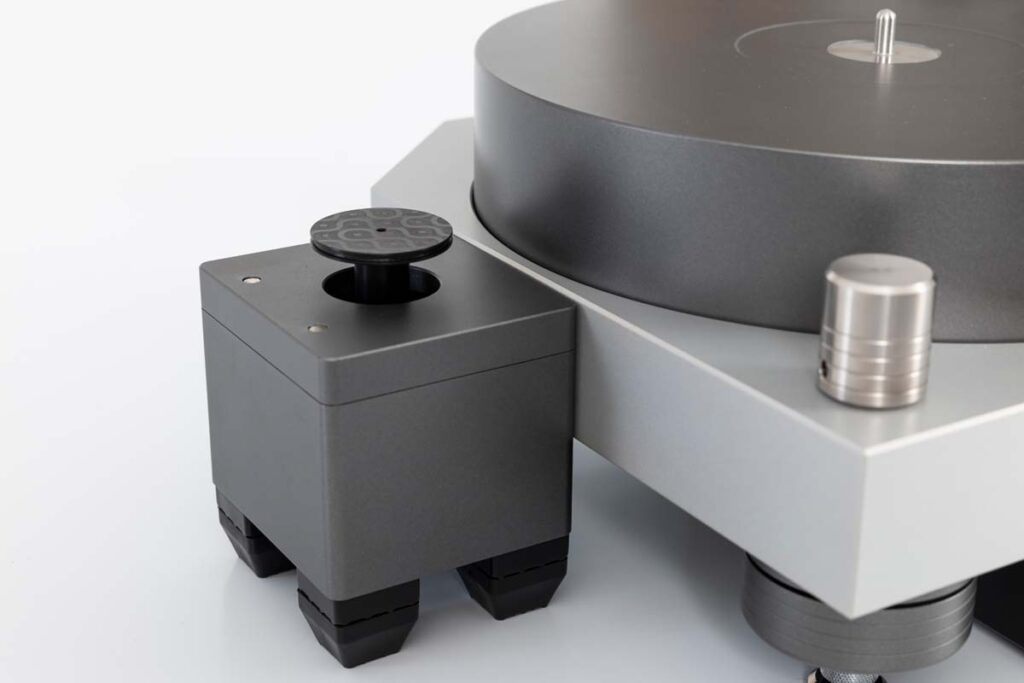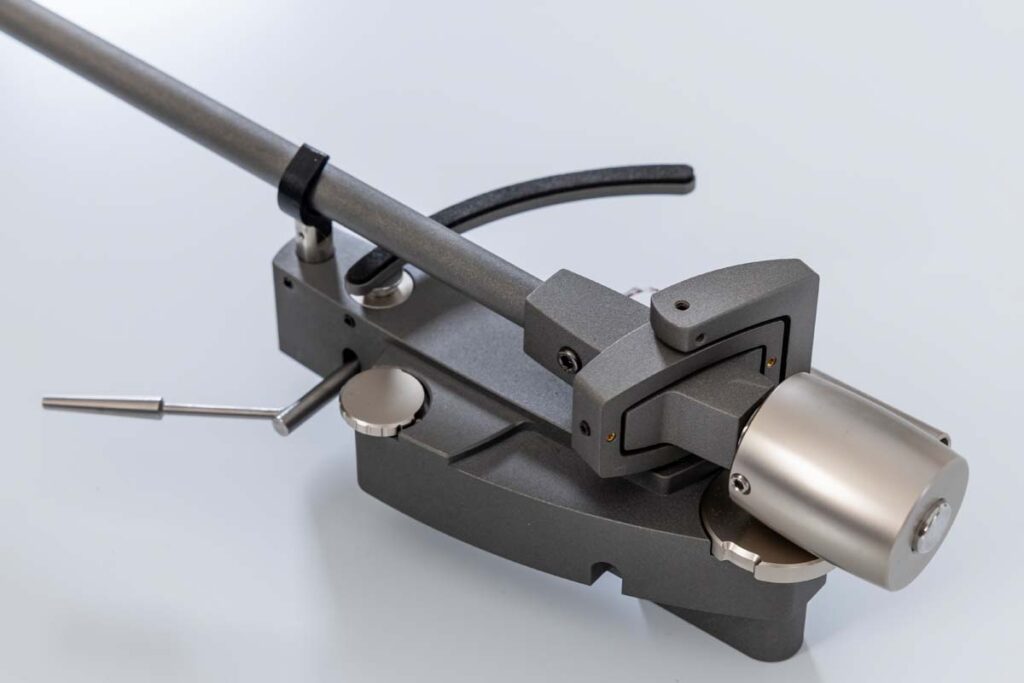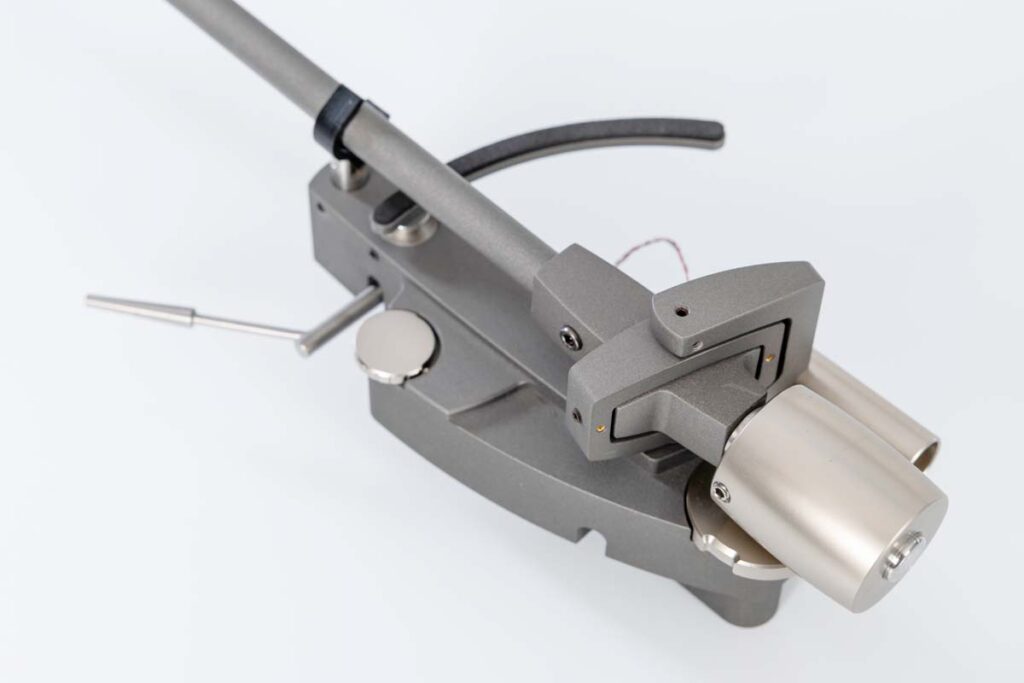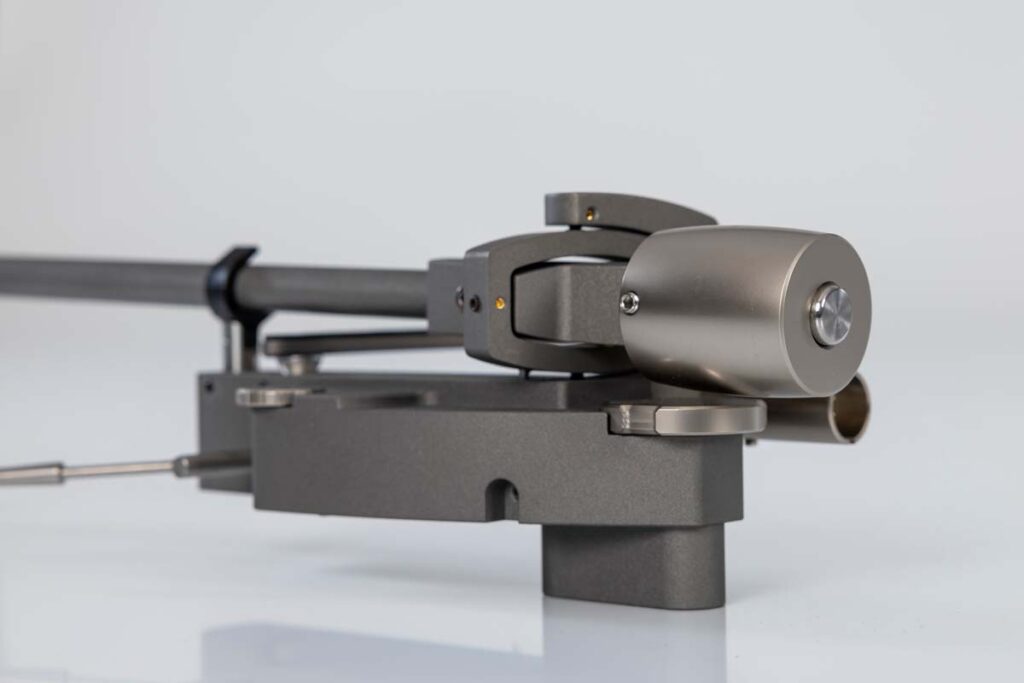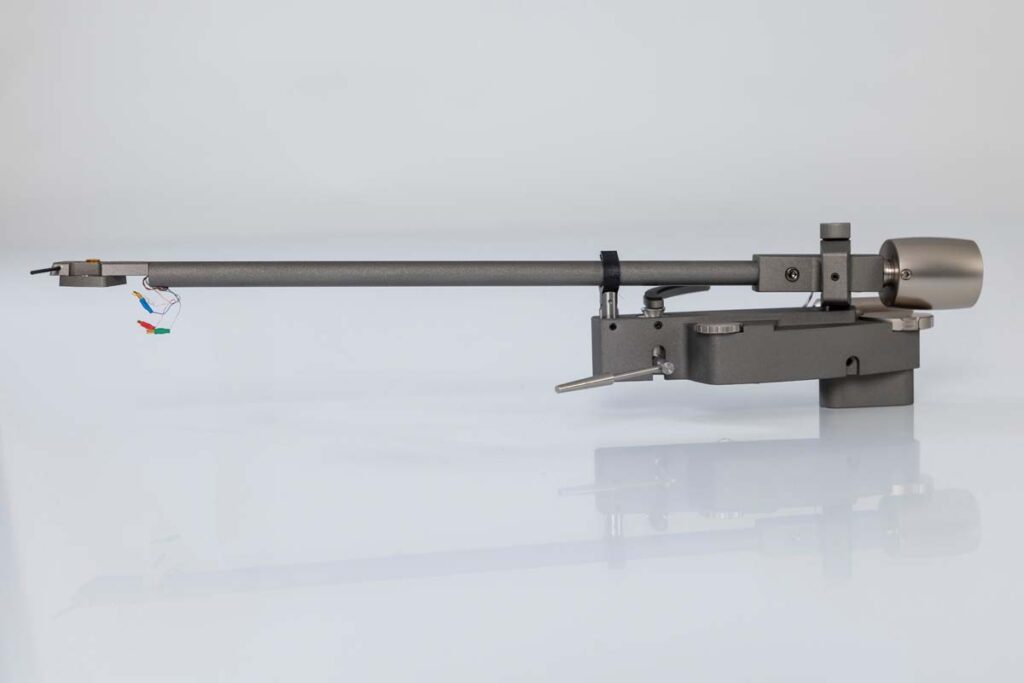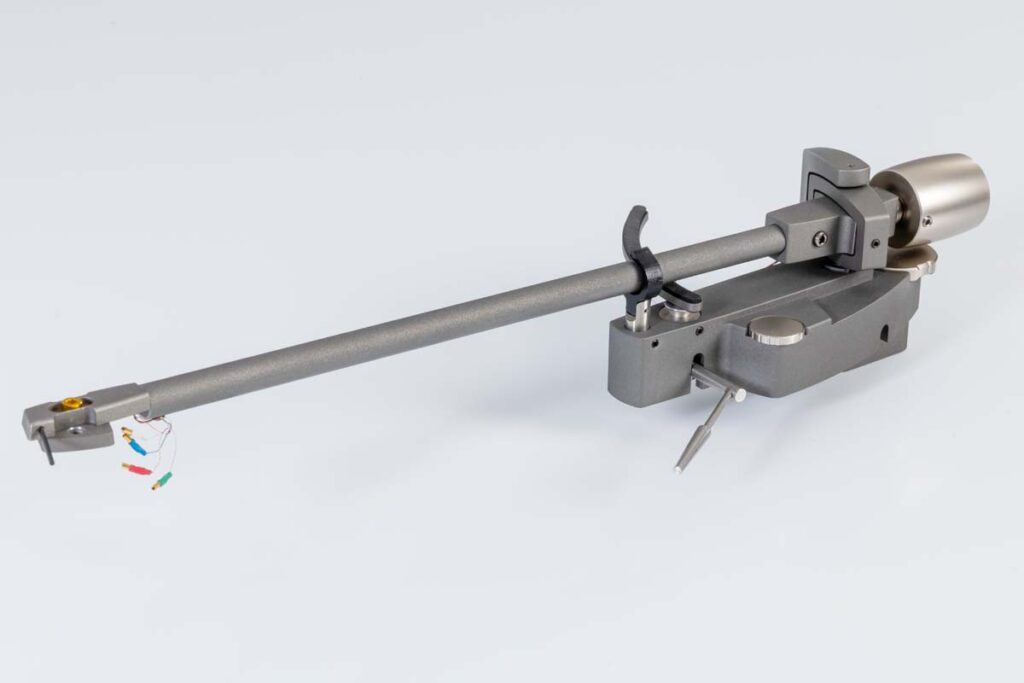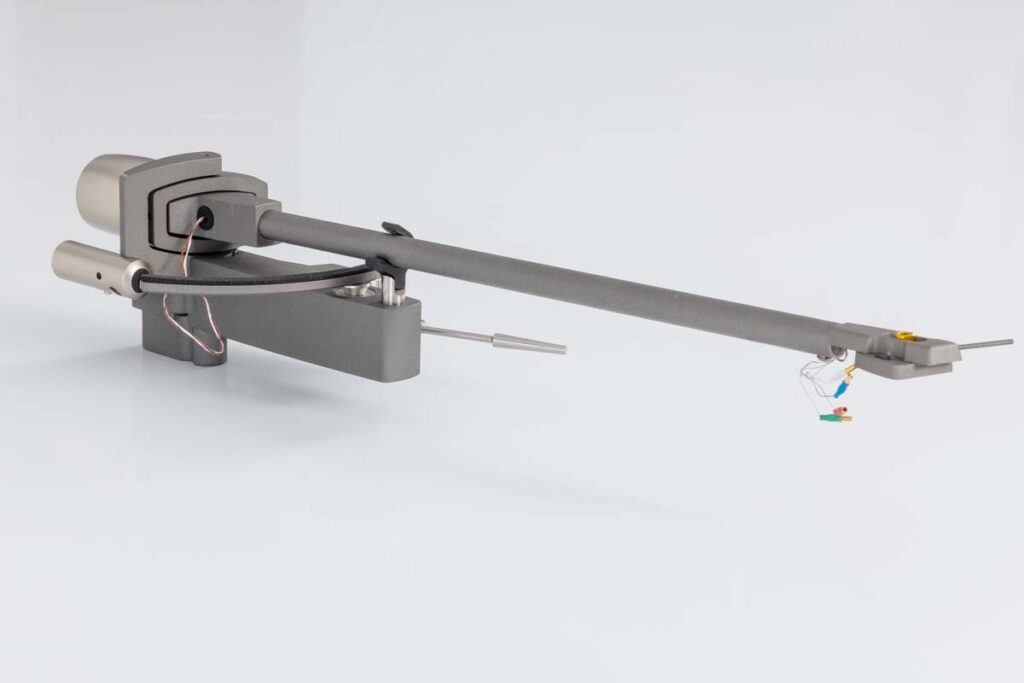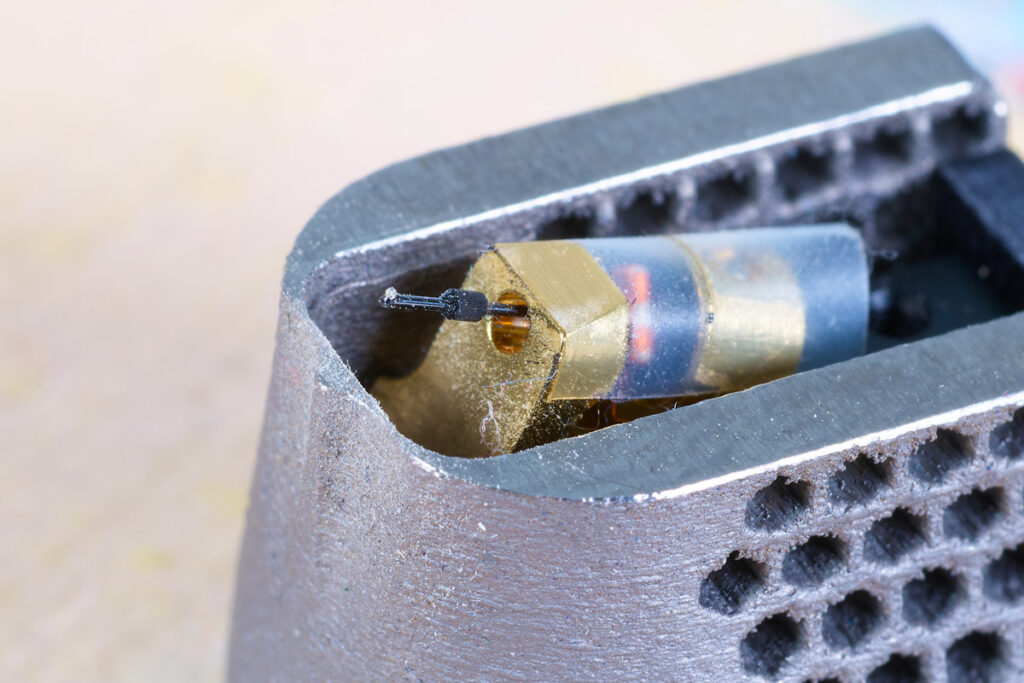As some five years have passed since we introduced the Zavfino Copperhead X with the Aeshna tonearm, it seems about time to take a closer look at the flagship product of the Canadian manufacturer.
Based in Truro, Nova Scotia, 1877 Phono has been active in the accessories sector for over 20 years and, since 2015, has been manufacturing four turntables and two tonearms under the Zavfino brand. Without exception, these are mass-drive turntables that differ significantly in their design and are clearly intended to appeal to different tastes. Zavfino is thus following a trend that can also be observed among large-scale manufacturers. Rather than trying to score points with ever-improving technical specifications, which can be expected to be beyond good and evil in drives of this quality anyway, increasing emphasis is being placed on striking design. This naturally includes the choice of a suitable cartridge. The German distributor IAD GmbH didn’t miss this opportunity and provided an exceptional cartridge from Wilson Benesch, which shall be discussed in more detail in a separate section later on. The design of the 1877 Phono Zavfino ZV11x Granite is vaguely reminiscent of a Micro Seiki RX-1500. What it has in common with the latter is that the turntable consists of a relatively small base unit with a motor housing placed next to the drive and to which the tonearm bases must be attached. As with its famous predecessor, the base is mainly made of aluminum alloy, supported by three rather “long-legged” feet. At their lower end are height-adjustable “spikes” that make contact with a stable surface using surface-protecting coasters. Make sure said surface offers some extra space, since with the tonearm protruding beyond the drives footprint and the external motor stand, you’ll need a base area of about 60 by 60 centimeters. The actual drive base is significantly smaller at 40 by 33 centimeters, making it look quite a bit less bulky than comparable products from other manufacturers.
It appears that Truro has paid particular attention to reducing unwanted vibrations. Five silicone cylinders arranged in a circle around the bearing, each of which has a metal cylinder embedded in it, are designed to suppress resonance as much as possible. In addition, a circular acrylic disc prevents parasitic vibrations from reaching the bearing spindle of the inverted bearing. This consists of a finger-thick stainless steel axle with a thread. During operation, this is used to continuously transport oil back to the top, where a ceramic ball sits in a cone-shaped recess. Two silicone rings decouple the solid bearing bush with its bronze-lined inner surface from the platter, while a Teflon disc acts as bearing mirror. The platter weighs 5.5 kilograms and is made of POM (polyoxymethylene), a plastic that’s popular with other manufacturers as well. Contact with the record is provided by a thin leather mat decorated with a total of 20 circular holes of various sizes.
The plinth has several indentations, which on the one hand break up the otherwise rather austere rectangular shape and on the other hand provide space for up to two mountable tonearms. The purpose of the missing rear left corner is not immediately apparent, as no additional tonearm can be mounted there. Although the Zavfino ZV11x is always shown in pictures with the motor housing on the left side of the drive, this corner actually makes for an ideal alternative mounting location. The supplied round cross-section belts are long enough to allow this mode of operation. The rather large motor pulley will typically be barely visible, as the scope of delivery includes a cover that magnetically attaches to the motor housing. The control for the DC motor is housed in its own enclosure, which is just small enough to fit comfortably between the two front legs under the drive.
The disadvantage of this type of positioning is that it makes it somewhat difficult to access the main switch on the rear of the control unit. However, all essential functions – speed selector switch and speed fine adjustment – are located on the front, where different-colored diodes also provide clear information about the respective operating status. The operating instructions also provide clear information, documenting each crucial step of the assembly process with clear pictures. Exemplary!
The shape of the tonearm – a Helmut Thiele design – also seems to be based on a classic model. In this case on the Technics EPA-500, with which the Zavfino TZ-1 shares the long, relatively thin tonearm tube and, above all, the characteristic arrangement of the bearings. The TZ-1 is a 12-inch-long gimbal radial tonearm with a matte gray finish that harmonizes perfectly with the Zavfino ZV11x Granite. The manufacturer doesn’t disclose the effective mass. However, resonance measurements with an Ortofon Jubilee and a Transrotor Uccello (which, incidentally, also work well with the Zavfino) suggest that the TZ-1 belongs to the medium-weight category (between 10 and 15 g effective mass). This is not the only reason why it proves quite versatile; the counterweight is also cleverly designed so that it can easily balance both the light Uccello (6.5 g) and the heavy Ti-B (17.1 g).
A unique design allows the tonearm to be adjusted comfortably and without play. To do this, a small adjustment wheel at the rear end must be operated, and the tonearm then moves gently up or down. Unfortunately, since your fingers will inevitably bump into the counterweight, this is difficult to do with the turntable running. The anti-skating is also adjusted via an unscaled disc dial. The connection for the external phono cable is also located in an unusual place: it is in a horizontal position to the left of the tonearm bearing. This position is ideal for people who like to experiment with cables. Thanks to its easy accessibility, cables can be replaced in a flash without having to fiddle around under the turntable. I used the Zavfino Majestic MK II (surcharge: €400) as a connector to the Lehmann Decade.
The Decade is set to 330 ohms, which proves to be just right in combination with the Wilson Benesch. This is when the combination of Zavfino ZV11x Granite and Ti-B shows itself at its best. To explore this, I like to use large orchestral warhorses such as Ralph Vaughan Williams’ Second Symphony (A London Symphony) recorded by the London Symphony Orchestra under André Previn. If a turntable can reproduce this genre of music in a spatially stable, tonally balanced, and lively manner, then it can certainly do the same with lighter pieces. The Zavfino masters this exercise so remarkably well that it will amaze even an experienced reviewer. The surprise is explained by the fact that the design of this turntable seems rather “technoid” and one instinctively expects a technically precise musical performance that is fascinating at first, but then becomes boring in the long run or, in the worst case, even irritating. This does not happen with the Zavfino because it not only draws the listener’s attention to sonic details for their own sake, but also integrates them naturally into a musical context.
This impression is also confirmed by the reproduction of Soulville (The Ben Webster Quintet). The strikingly low noise level – commonly referred to as “blackness of the background” – enables the Zavfino, in combination with the Wilson Benesch Ti-B, to give the musicians the space they deserve. The extensive damping measures of the drive are likely to have a significant impact on this sound impression. In any case, I have very rarely heard Ben Webster sound so relaxed and natural. The ZV11x makes it very easy to separate the overly prominent tenor saxophone from the other instrumentalists, especially Herb Ellis’ swinging, light-footed bass playing. This bass reproduction is the key to the much-vaunted foot-tapping effect that makes the decisive difference between simply playing recorded music and enjoying music. Of course, this only works if the timing is right, which is one of the Canadian-British combo’s forte. And that’s exactly how the combination of the Zavfino ZV11x with the TZ-1 and the Wilson Benesch Ti-B elevates playing an LP to an outstanding musical experience.
WILSON BENESCH TESSELATE TI-B CARTRIDGE
British manufacturer Wilson Benesch is best known for its loudspeakers and sub-chassis turntables, including the characteristic tonearm with its conical carbon fiber tube. Unfortunately, the latter are no longer in production, but the Tessellate Ti cartridge is still available in three different versions (B, S, D). The basic Ti-B model features a boron tube as needle carrier, and comes with an elliptically cut diamond. In contrast, the Ti-S and Ti-D variants each have a micro-ridge cut and either a sapphire or diamond stylus carrier. In all cases, a ring made of ultra-light carbon fiber is used on the stylus carrier to dampen unwanted resonances. Anyone who has raised an eyebrow while reading about the elliptical cut of the Ti-B should note that the diamond is anything but the kind of run-of-the-mill ellipse that you can find on significantly cheaper systems. Under the microscope, it becomes clear that the diamond is of a quality you don’t see every day.
The description of the generator as a “pure iron square coil” in the English original is somewhat misleading. Here, too, a look through the microscope provides clarity. These are copper coils wound on a square coil carrier made of pure iron. With six ohms, the Ti-B should be considered a low-impedance system; Wilson Benesch recommends an input impedance of 200 to 470 ohms for the phono preamplifier. The output voltage is specified as 0.32 mV at a speed of 3.54 cm/s (corresponding to approximately 0.45 mV at 5 cm/s), which shouldn’t cause any problems for a high-quality phono stage. The low tracking force range of 10 to 14 mN specified by Wilson Benesch is unusual. Moving coil (MC) cartridges with stylus compliances around 12 µm/mN typically require tracking forces in the range above 20 mN. In fact, the sample I had only showed good tracking behavior of 70 µm at 20 mN with the anti-skating set accordingly, which is why I operated it on the Zavfino TZ-1 tonearm with this value.
Incidentally, the name “Tessellate Ti” refers to the manufacturing process of the semi-open housing. It is manufactured from the light metal titanium using the SLS process (SLS = selective laser sintering). The manufacturer expects the crystal structure of the material, in combination with the organic-looking shape of the housing with honeycomb-shaped openings on the side, to result in optimized resonance behavior and lower mass. However, the latter should be understood in relative terms, as the Tessellate cartridges are actually unusually heavy at 17.1 grams and cannot be balanced by every tonearm without the use of an extra-heavy counterweight. There are three housing options to choose from. In addition to the unpolished, matte gray titanium, housings in polished silver or gold are also available at an additional cost. However, these come at a price. While the Ti-B in matte gray costs €6,490, the gold-plated Ti-D will set you back a whopping €16,790.
Accompanying Equipment
Turntables: Technics SL-1200MK2, DFA Woodpecker, Linn Sondek LP12 (Majik) | Tonearms: DFA Straight-10, Linn Basik Plus, Linn Ittok LV II/2 | Headshells: Audio-Technica MS-8, Ortofon LH-6000, Technics, Yamamoto HS-1A | Cartridges: Denon DL-103, Linn Adikt, Ortofon Concorde R, Ortofon Jubilee, Ortofon Vero Special, Transrotor Uccello | Phono preamplifier: Lehmannaudio Decade | Network tuner: Onkyo NS-6170 | Preamplifier: Bryston BPS-25MC | Power amplifier: Linn LK100 | Headphones: Sony MDR-1 RNC | Loudspeakers (passive): Naim Credo | Active loudspeakers: Neumann KH 310 A | Cables: Sommer Cable | Rack: DIY
Turntable 1877 Phono Zavfino ZV11x Granite
Drive concept: heavy mass drive with belt drive | Special features: provision for mounting a second tonearm | Rotation speeds: 33 and 45 rpm | Platter weight: 5.5 kg | Total weight (including motor and platter): 22.3 kg | Finish: Full Charcoal, Satin Silver, Powder Coat/Western Electric | Dimensions (W/D/H): 48/38/6 cm | Power supply weight: 2 kg | Power supply dimensions: 18/20/7 cm | Warranty period: 3 years | Total price (including TZ-1): €14,990
Tonearm TZ-1
Concept: straight, statically balanced radial tone arm | Special features: selectable internal wiring | Finish: gray | Total length: 375 mm | Effective length: 304.8 mm (12″) | Mounting distance: 291.4 mm | Overhang: 13.4 mm | Offset angle: 17.8° | Geometry: Löfgren A (Baerwald) | Warranty period: 2 years | Unit price: from €3,990 (incl. Majestic tonearm cable)
IAD
Johann-Georg-Halske Straße 11
41352 Korschenbroich
Phone: +49 2161 617830
info@iad-gmbh.de

